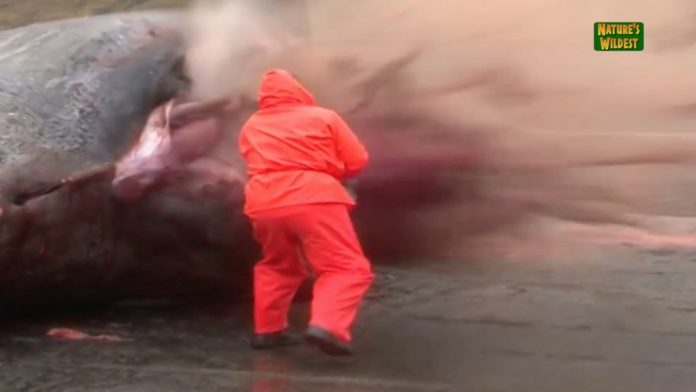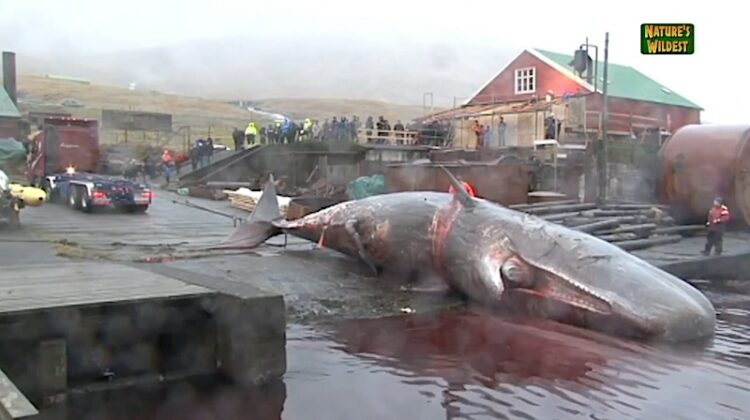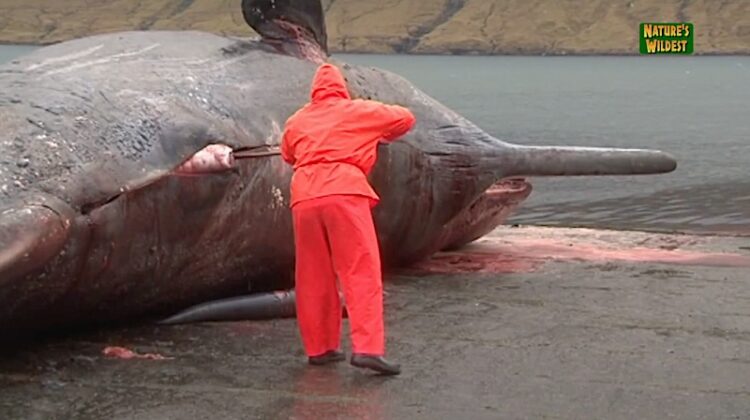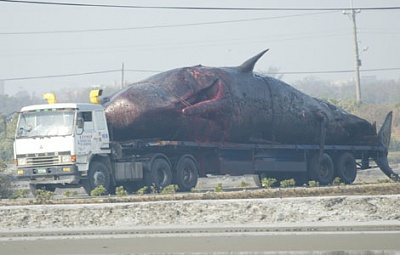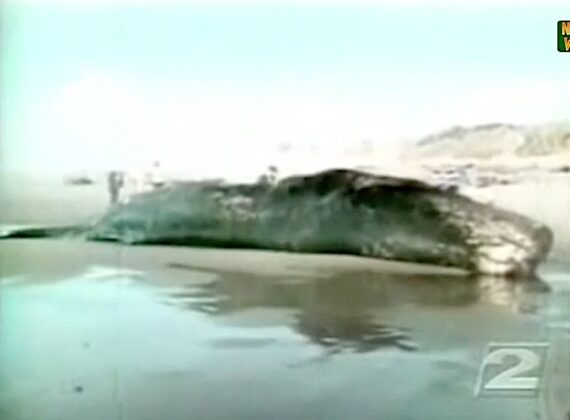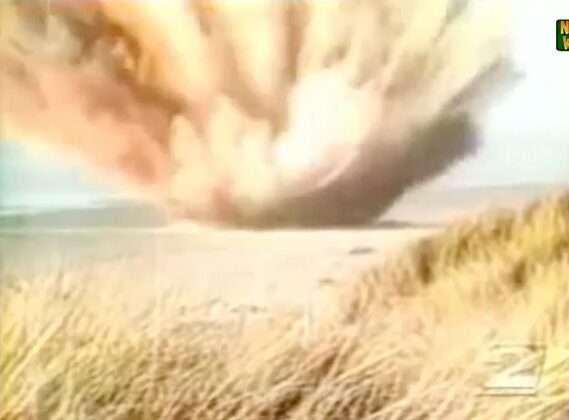The spectacle of a whale carcass exploding might sound like something out of a surreal comedy, but it has indeed happened several times around the world, each incident providing a unique blend of scientific intrigue and public fascination.
Faroe Islands Incident
One such peculiar event took place in the Faroe Islands, on November 26, 2013. A sperm whale had washed ashore, its body beginning the natural process of decomposition. As part of the management of such incidents, local officials attempted to perforate the whale’s skin to release accumulated gases and prevent a larger explosion. Despite these precautions, the carcass still burst due to the immense pressure built up inside from the decomposition process. The event was captured on video, which was later broadcast by Kringvarp Føroya, the national Faroese broadcaster. Early reports were that the whale carcass was destined to be on exhibit at the national museum.
The Taiwan Explosion
Moving to Taiwan, another dramatic whale explosion occurred on January 29, 2004, in Tainan City. A 17-meter-long sperm whale had beached itself and died, leading to a complex operation to move its body for a post-mortem examination at the local university. But when it got there the university refused to take it. On its way back through town the whale spontaneously exploded, splattering blood and guts onto shops, cars, and local spectators. This event underscored the challenges of managing large marine animal carcasses in urban environments and the unpredictability of biological processes once started.
The Oregon Exploding Whale
Perhaps the most famous whale explosion occurred in Florence, Oregon, on November 12, 1970. A 45-foot, 8-ton sperm whale had washed up on the beach, creating a logistical nightmare for local authorities. At the time, Oregon beaches were under the jurisdiction of the Oregon Highway Division, which made the unusual decision to dispose of the carcass using dynamite, believing that the blast would send small chunks of whale into the ocean to be eaten by scavengers.
However, the plan backfired spectacularly when the explosion sent huge chunks of whale blubber flying over spectators and crashing onto cars. Although everyone was covered in whale guts, no one was seriously injured. This event was famously documented by KATU-TV reporter Paul Linnman, whose coverage turned the incident into a piece of American folklore. The story was revisited in 2013 by Nature’s Wildest who humorously reflected on the then new Faroe Island explosion along with the Taiwan and Oregon incidents in a YouTube video. The first of its kind on YouTube, it went viral with over 10 million views before it was taken down.
Today, the incident is commemorated with “Exploding Whale Memorial Park” in Florence, where the event took place. And we’ve re-uploaded the video to our YouTube channel.
